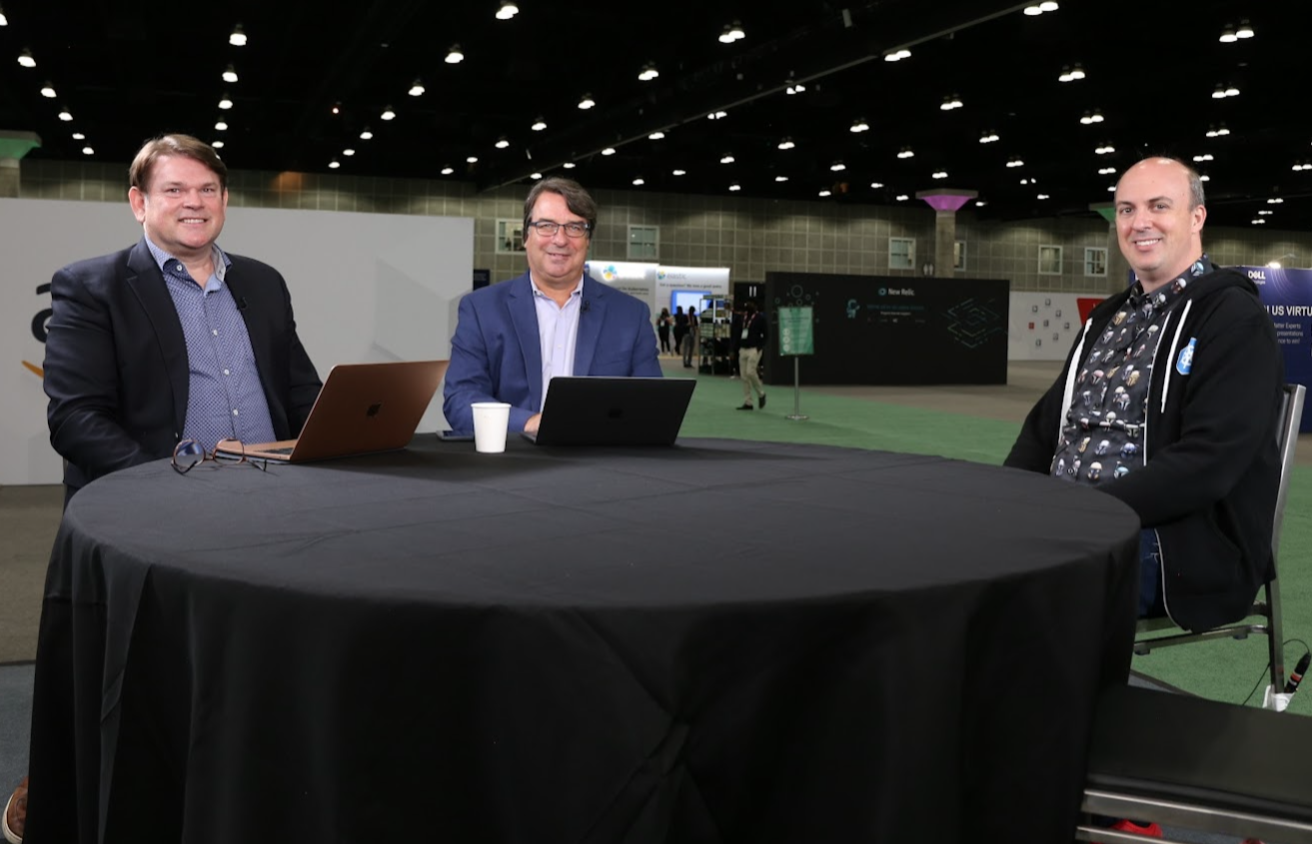 CLOUD
CLOUD
 CLOUD
CLOUD
 CLOUD
CLOUD
The open hybrid cloud has been a topic of discussion for more than a decade as software applications increasingly bridge two worlds of public cloud and on-premises data centers.
Managing this emerging world of hybrid computing is the central theme for this year’s KubeCon + CloudNativeCon North America event, exploring the progress of open source’s role toward interoperability.
“Open always wins,” said David Nicholson, (pictured, left), co-host of theCUBE, SiliconANGLE Media’s livestreaming studio, as he discussed the KubeCon keynote. Nicholson considers open source to be the present and future of enterprise computing.
“Whenever I think of open-source anything, I go back to the foundations of Linux and remember a time when you had to reboot a Linux server to rescan a [Small Computer System Interface] bus to add a new storage device,” Nicholson recalled. “As things have developed, we keep coming into these new situations — multicluster management was a big point of conversation in the keynote today. It’s fascinating when you start thinking about something that was once a backroom science experiment and it’s now the center of the enterprise.”
Nicholson sat down with fellow host John Furrier (pictured centered) and Red Hat Inc. Director of Market Insights and Cloud Platforms Stu Miniman (pictured, right). The trio primarily discussed the maturing Kubernetes ecosystem as the open-source container management platform tackles new challenges to secure an increasingly remote working culture in today’s post-isolation environment. (* Disclosure below.)
From an open-source standpoint, security has been front and center of discussions since the dawn of enterprise computing. The matter of securing the supply chain has been a priority in evolving cloud computing to support both corporate and regulatory demands. High-profile breaches, such as the SolarWinds hack, raised valid concerns about securing open-source systems, but the work done to build a more secure ecosystem is reflected in the community present at this year’s event, according to Miniman.
“Now, open source and security go together,” Miniman said. “That wave of open source obviously is one of the things that brought me to Red Hat. I’d had a couple decades of working with the enterprise and open source, and that adoption curve, which went through a few bumps in the road, took time. But today, open source is a given. This show and this ecosystem are such proof points of it.”
Security has certainly catalyzed a great deal within the open-source community, Furrier pointed out, noting the advances specific to Kubernetes in stabilizing the ecosystem. For Red Hat, in particular, recent acquisitions, including StackRox has brought Kubernetes-native security into the fold.
“I’ve got a person from the StackRox acquisition on my team, and I told him, ‘Hey, you gotta cross-train all of us. We need to understand this more,’” Miniman said. “From a marketing standpoint, we need to talk about it from the developer standpoint. We need to have consideration of it — it needs to go to production. We all know this shift left is something we’ve been talking about for many years. So yes, security, security, security.”
Reiterating the industry’s adoption roadmap for securing open-source systems, Furrier cited another segment with a group building programs for training and certification for enterprise-grade security. Beyond the “hardcore” developer community, this trend speaks to the mainstream interest in expediting security into more operations, Furrier added.
The challenge of bringing these concepts into production as enterprise-ready services was reflected in the keynote with the mention of cluster and pod security, alongside infrastructure security. For Red Hat, that degree of securing the supply chain requires an innovative approach in order to validate blocks of code as they’re being implemented.
“How can I have my infrastructure as code? How can I make sure I don’t have drift? Because I can’t just let it live in GitHub where the version [of code] is controlled,” Miniman said. “We’ve gone beyond human scale. If I don’t build automation into it, if I don’t have the guardrails in place, humans will mess things up.”
Having been built at its core for this type of automation, Kubernetes incorporates the perks of a controlled, DevOps-driven environment for enterprise products. According to Miniman, Red Hat has already seen several customers deploying monitoring tools to streamline the deployment of applications to Kubernetes.
Here’s the complete video analysis, part of SiliconANGLE’s and theCUBE’s coverage of KubeCon + CloudNativeCon NA. (* Disclosure: This is an unsponsored editorial segment. However, theCUBE is a paid media partner for KubeCon + CloudNativeCon NA 2021. Red Hat, the Cloud Native Computing Foundation and other sponsors of theCUBE’s event coverage have no editorial control over content on theCUBE or SiliconANGLE.)
Support our mission to keep content open and free by engaging with theCUBE community. Join theCUBE’s Alumni Trust Network, where technology leaders connect, share intelligence and create opportunities.
Founded by tech visionaries John Furrier and Dave Vellante, SiliconANGLE Media has built a dynamic ecosystem of industry-leading digital media brands that reach 15+ million elite tech professionals. Our new proprietary theCUBE AI Video Cloud is breaking ground in audience interaction, leveraging theCUBEai.com neural network to help technology companies make data-driven decisions and stay at the forefront of industry conversations.